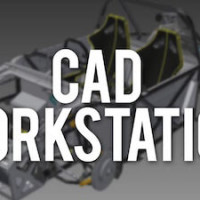Recently, I have had the chance to put together a CAD workstation build for myself. I finally was able to afford and build my own workstation. But in doing so, I was unable to go to the very extreme and build myself a system which could, if not would, last the technical changes for a few years to come. If you are an avid CAD designer, then you know that a proper workstation can make your life easier and your efforts much more productive. I want to help you build your own CAD workstation and thus have compiled a list of resources. These resources will help you decide which hardware to add to your workstation. So let’s get started!
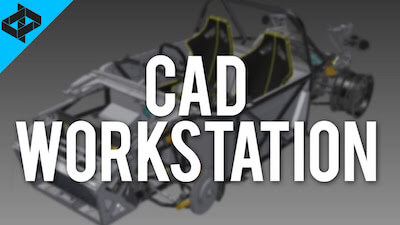
CAD Workstation Parts
To build a workstation, you need to focus on various parts where some of the most practical and important pieces of hardware are overlooked because of lack of knowledge or exposure. It’s no surprise, that CADers around the world are confused when it comes to making a decision between types of SSD’s or the different properties of different mice. The most important parts include the processor, memory and storage options, high-end graphics/video output capabilities as well as the input devices (such as mouse, keyboard etc.). Check out the following reviews of the best products for CAD designers below.
- Best CPU for CAD
- Best CAD RAM (Memory)
- Best CAD SSD (Storage)
- Best CAD Graphics Card
- Best CAD Mouse
- Best CAD Keyboard
- Best CAD Monitor
Build Your Own CAD Workstation!
The 12CAD team has put together a “best build” list. This list essentially pulls together the best products that work together as an ultimate but affordable CAD workstation. Check out the list and their descriptions below:
1. CPU
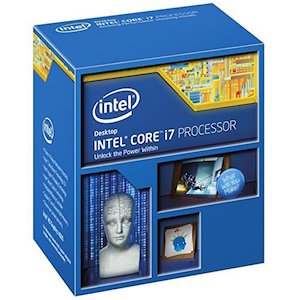 Intel’s Core i7
Intel’s Core i7
Core, is the new brand name for Intel processor products, pushing the Pentium and Celeron further down the performance spectrum. The Nehalem, Westmere, Sandy Bridge, Ivy Bridge, Haswell, Broadwell and Skylake micro architectures encompass the entirety of the product line up and offer more than just fast speed and more cores. The Intel Core i-series product line is definitely the best out there, especially the i7 series. We recommend the Intel i7 4790k, which has the features as outlined below.
| Processor Number | i7-4790K |
| Instruction Set | 64-bit |
| Lithography | 22 nm |
| # of Cores | 4 |
| # of Threads | 8 |
| Processor Base Frequency | 4 GHz |
| Max Turbo Frequency | 4.4 GHz |
| Processor Graphics ‡ | Intel® HD Graphics 4600 |
| Graphics Output | eDP/DP/HDMI/DVI/VGA |
| Package Size | 37.5mm x 37.5mm |
| Graphics and IMC Lithography | 22 nm |
Many users have put this as the “best bang for the buck”. Even though the AMD lien of CPUs has its advantages over Intel, the i7 is an industry and market favorite for its compatibility and the Intel trademark quality. It is more than fast enough to render your 3D models in softwares such as Solidworks, CATIA, and AutoCAD. This CPU includes Intel’s Rapid Storage Technology which offers increased performance, responsiveness, and expandability. But above all, the 4.0Ghz with a 22nm wide pipeline assembly can be overclocked to top out at 4.4Ghz. The 64-bit architecture accommodate all kinds of software and operating systems afloat in the market with a maximum of32GB RAM. Furthermore, even though this PC is not ECC (Error-Correction Code) enabled, it does have an Intel HD Graphics 4600 350MHz (overclocking to 900+Mhz) GPU with 3 simultaneous display outputs at 3840 by 2160 @ 60MHz.
2. RAM (Memory)
Memory vs. Storage
Many a times, the non-techie CADer has a tough time deciding on memory. Some people even confuse it with storage, since, in terms of the human psychology, both terms are pretty much interchangeable. But the main difference is the fact that storage is permanent in nature, storing information and data for indefinite periods of time. RAM or the computer’s “primary memory” holds data for the direct use of the processor. This is because RAM is just electronic circuits moving signals around making the data available for the processor in a timely manner. If the contents of RAM we’re to be stored on a hard disk, retrieval times would be in seconds, which is way too long for the processor to wait. Read further discussion on memory vs storage by going here.
For CADers, the first thing to take into account is the number of slots available for sticking RAM in. Next, you should consider your base operating system and your preferred CADing package. Each package has different requirements and your processor type will also effect RAM performance. Let’s talk about this before reviewing our selection.
What kind of RAM and when?
If your CAD package is multi-threaded, it will make more sense to have a multi-threaded processor. This kind of processor will also benefit more from RAM spread over more DIMM (Dynamic Interface Memory Module or RAM slots). For single core processors, more RAM is the only thing you need to worry about. After this, comes the big question, how much RAM is needed.
This depends on a few things. Combinations should be squares of 2 GB. The most common combinations, although you can add 2GB and 4GB to make 6GB, are 4, 8, 16, 32 and 64GB. For Windows and Linux as the base operating system, minimum amount of RAM is 4GB. 8GB is recommended for optimal performance on Mac OS because of the graphically-intense interface. Furthermore, another 4GB is the least for any package, where the minimum recommendation on the manufacturers website average around 8GB. All in all, a pro-CADer must have at least 16GB of RAM to accommodate operating system and package usage. This last statement makes the assumption that you will have your CAD software and nothing else of substantial use open.
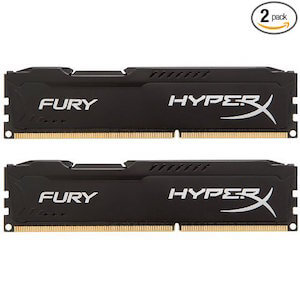 Best CAD RAM is the Kingston Hyper X Fury
Best CAD RAM is the Kingston Hyper X Fury
For RAM, the industry leader is Kingston. No doubt then that we prefer this manufacturer as the optimum solution with it’s HyperX DDR3 sticks with a maximum of 8GB per stick, or 16GB for the DDR4 version. Data transfer rates peak at 3200Mbps with a 288 pin configuration. This also has ECC enabled, with CRC, GDM and parity checking included by default. If you can afford a motherboard that can support such RAM, you definitely need to get it.
| Capacity | 8/16/32/64 GB |
| Speed | 2133MHz, 2400MHz, 2666MHz |
| Consumption | 1.2V |
| Optimized | X99 Intel |
3. Storage
Introduction
Before the advent of SSDs, storage was an often neglected aspect as there was variety in manufacturer, size and form amongst other options, but the technology was essentially the same. These we’re Hard Disk Drives (HDDs) with blocks of mechanically driven pieces essentially the same inside. Data was stored on those metal blocks (circular for rotatory purposes) so reading and writing from such disks meant that a mechanical head would lower itself on the disk and detect the magnetic flux in order to interpret what the saved electrical charge represented as data.
The big revolution was the move from ATA to SATA and then SATA II which basically changed connectivity options for such HDDs. Solid State Drives (SSDs) use SATA interfaces connecting to flash memory on the inside, and that is the real deal. Hence they’re fast, reliable and have a longer life. The best workstation for CAD should have a combination of the two, SSD and HDD.
Let’s look at what we should be looking for in CAD SSDs and how to setup an HDD with it.
SSD 101
For SSD’s, the first thing is the warranty, because we want to focus on economy-oriented reliability. Pro disks have 5 years whereas commercial disks have 3 years. Most manufacturers give ratings to their drives but the thing you should look for is the MTBF (Mean Time Between Failures) measured in millions of hours.
Moreover, wear-leveling is a mechanism that spreads the natural wear (& tear) of read and write requests as evenly as possible so to save up on drive lifeline. Also, migration and monitoring tools also come in with many drives and are almost always handy.
The last thing to look for (and this is certainly not the last on the most technical SSD-purchase manual available on earth) should be the head and fitting. 2.5” drives are more suited for laptops with the kind of head that is compatible with mobile design. 3.5” drives are the ones most suited for desktops, with adapter extensions available with some drives, but not all.
Gear up with the Samsung SSD 840 Pro
For professional tasks, the Samsung SSD 840 Pro lives up to it’s reputation. 256GB also available in 512GB, reads 510MBps and writes at 486MBps with the manufacturer’s assurance of such optimal performance even when the disk is full. To up the ante, they also state that this performance will be maintained in sustained read/write events as well as in random selection where the data is scattered all over the drive, something very easily determined by disassembling and rebuilding assemblies which would call all bits and pieces of a drawing. In terms of read and write sustainability, anything less than or up to 30GB a day will ensure a life of at least a century.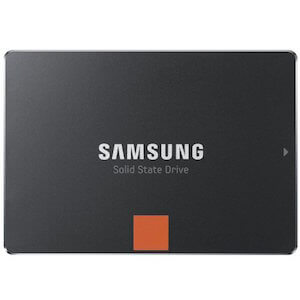
SSD: Why?
Having said all this, the SSD is meant (for CAD workstations) for installation of your operating system as well the applications you need frequent or quick access to. Since SSD’s are not economical for commercial usage, the best way to go about this is to get one SSD (128GB to 512GB) for your primary applications, then use an HDD (of 1 or 2TB) for backup. All your data/work/music etc. should go into that HDD. See the below table for my preference of an SSD & HDD combination.
HDD: When?
The Seagate 6 TB SATA 3.5 (ST6000DX000) is the best option available for Pro-CADers who are looking for long-term reliability as well as performance sustenance over the long run. This device is best suited for Pro-CADers as the powerhouse of a workstation being developed is going to push every peripheral to its limits. Furthermore, the 6TB means you’re not changing or
upgrading your system for enough time to justify the $$ you’re dishing out for this mammoth.
| Samsung SSD 840 | |
| Capacity | 128, 256, 512GB |
| Form factor | 2.5” |
| Interface | SATA 6.0 Gbps |
| MTBF | 1,500,000 hours |
| Warranty | 5 years |
| Seagate SATA 3.5 | |
| Capacity | 2, 4, 5, 6TB |
| Form factor | 3.5” |
| Interface | SATA 6.0/3.0/1.5 Gbps |
| MTBF | 1,400,000 hours |
| Warranty | 5 years |
4. Monitors
2’s a couple, 3’s a preference
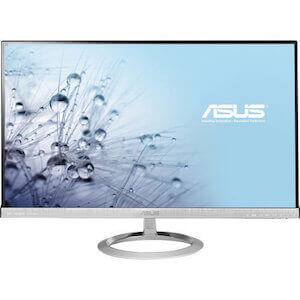 When it comes to monitors, the first thing is the size of the screen, since that’s your primary output device. Monitors are hard to define for each user. Some users prefer a combination of screens where they can arrange all needed windows on a separate screen. Other times, the larger screens can serve the same purpose. We highly-recommend a multiple monitor setup, at least 2 are a personal preference.
When it comes to monitors, the first thing is the size of the screen, since that’s your primary output device. Monitors are hard to define for each user. Some users prefer a combination of screens where they can arrange all needed windows on a separate screen. Other times, the larger screens can serve the same purpose. We highly-recommend a multiple monitor setup, at least 2 are a personal preference.
We recommend the IPS line of monitors as they provide the most crisp output. The ASUS MX279H 27 inch monitor is a product we at 12CAD.com use on a daily basis. It is high-quality with built-in speakers and large enough for any task. There are two HDMI ports and one D-Sub connection for VGA inputs. ASUS include an HDMI-to-DVI cable in the box with the monitor, but don’t have a DVI socket on the monitor itself. A two monitor setup would be a great assortment for any serious CADer. Check out more reviews of monitors here.
| Screen size | Wide Screen 27.0″(68.6 cm) 16:9 |
| Max res. | 1920 x 1080 |
| Pixel pitch | 0.311 mm |
| Brightness | 250 cd/㎡ |
| Response time | 5 ms |
| Colors | 16.7 Million |
| Visual output | HDMI x 2, D-Sub, DVI-D (via HDMI-to-DVI cable) |
| Voltage | 100-240 V/50-60 Hz |
5. Input devices
Mouse options
Choosing a good mouse is essential for a CADer, or any person who is going to use the mouse for the most part of their professional day. The criteria for choosing a mouse can be broken down as follows:
Wireless capability
A USB mouse is capable of working, without the need for replacing batteries. Limited mobility due to wire length is a disadvantage. Even though wireless mice have a significant advantage over the wired mouse, an extra USB port will be indefinitely occupied. Both kinds have their own advantages, your personal preference will be the deciding factor.
Design
Does your mouse have a scroll wheel? Would you like one? Does it have an ergonomic design? Is it ambidextrous or not? All such questions regarding the design need to be taken into account since the mouse’s design will make or break your work routine.
DPI & sensitivity
Dots Per Inch is the measure of sensitivity. Gamers are most conscious about their mouse’s DPI but having a high DPI for CADing will undoubtedly help as navigating on zoomed out designs will require extra sensitivity.
Misc.
The brand of the mouse, extra buttons, scroll wheel and button and programmability are all miscellaneous features that can be looked into provided you have the cash for it. If not, leave them be since only a Hollywood graphics animations expert will have usage of such options programming the extra buttons for predefined routines etc.
Go with 3DConnexion!
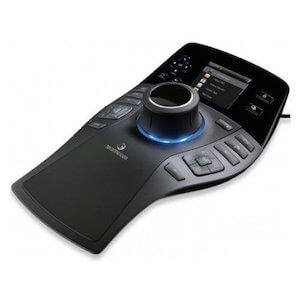 The 3DConnexion duo is the combination of the CadMouse and the SpacePilot Pro. This combination is sure to compliment any CAD task. The CadMouse is the first mouse developed according to regular mouse shapes for CADers, in the world. It’s meant to be a complimenting accessory to your regular desktop being used for general tasks with the 8200 DPI & 1 Khz of responsiveness seamless on the mouse pad developed for the mouse. The support padding on the bottom is also customized to the pads design so that the static friction remains minimum and results in almost silent operation.
The 3DConnexion duo is the combination of the CadMouse and the SpacePilot Pro. This combination is sure to compliment any CAD task. The CadMouse is the first mouse developed according to regular mouse shapes for CADers, in the world. It’s meant to be a complimenting accessory to your regular desktop being used for general tasks with the 8200 DPI & 1 Khz of responsiveness seamless on the mouse pad developed for the mouse. The support padding on the bottom is also customized to the pads design so that the static friction remains minimum and results in almost silent operation.
With this, the SpacePilot Pro, has an LCD with icons, email configurations and other widgets to compliment your CAD tasks as well as complete tasks without leaving your design canvas. Keyboard-alternative controls, a 6DoF proprietary sensor, programmable buttons and a hand sized platform are all part of this package giving you complete CADing freedom. For CADing, this mouse duo is the one you want, if you can afford it.
| SpacePilot Pro |
| Features: 3Dconnexion® six degrees-of-freedom (6Dof) sensor Color LCD Workflow Assistant 31 programmable keys in total Full size advanced wrist rest design 231mm x 150mm x 58mm / 9.1″ x 5.9″ x 2.3″ 880g / 1.94lb
|
| CadMouse |
| Features: 7 buttons total (including dedicated Middle Mouse Button) 8200dpi / 1000Hz laser sensor Gesture / radial menu button PTFE feet 1.8m braided USB cable 128 mm x 80 mm x 44 mm / 5” x 3.15” x 1.7” 130g / 0.29lb |
6. Keyboards
First things first
There is no such thing as a CAD keyboard. Key combination and programmable function keys allow a host of options and functionalities to be directly accessible from the keyboard. The standard layout works more than well enough for any semi-pro or hobbyist CADer. With that said, there are advantages to having keyboards with extended functionality.
Extravaganza
Since we’re talking about building a long lasting and well-rounded CAD station, my pick for a keyboard is the Logitech G510s. It’s a gaming keyboard, with 18 programmable keys (that’s 18 predefined macros and routines accessible with one click), wired connectivity with a gold plated USB header and an open, easy to clean back lit key frame. And best of all, it has an LCD atop for widgets and custom accessibility options. Over all, this keyboard will rock out whether your CADing or CODing (Call of Duty-ing).
Alternatives
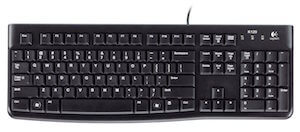 Like before, there is no such thing as a CAD keyboard, but since some people might not want 18 programmable keys, or may want some mobility with their input devices, a wireless home-theater accessory is a good choice. Introducing Logitech’s Illuminated Living Room Keyboard K830. The wireless keyboard has illumination options with a track pad built into its side for a well-rounded experience. It’s primarily a smart-TV accessory but will handsomely take on even the lengthiest of key strokes, something uncommon to CAD.
Like before, there is no such thing as a CAD keyboard, but since some people might not want 18 programmable keys, or may want some mobility with their input devices, a wireless home-theater accessory is a good choice. Introducing Logitech’s Illuminated Living Room Keyboard K830. The wireless keyboard has illumination options with a track pad built into its side for a well-rounded experience. It’s primarily a smart-TV accessory but will handsomely take on even the lengthiest of key strokes, something uncommon to CAD.
| Logitech K850 | |
| Interface | USB |
| Localization | English |
| Color | Black |
| Extra Keys | 18 |
| Hot keys | Multimedia, vol, programmable |
| Features | LCD, audio support |
| Warranty | 1 year |
7. Visual Graphics Adapters a.k.a Graphics cards
Gaming vs. CADing
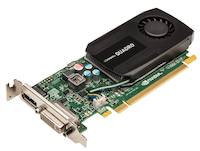
Nowadays, commercial use of performance oriented, high end cards is limited to CAD/CAM development or the gaming industry. And that’s the primary differentiation between the types of cards. Basically a CAD GPU is specially designed and often tweaked to chunk out small renders in quick successions. This benchmark enables us to stress test the card as well as measure the card’s influence on the rest of the systems speed. As the hardware pipes are designed to carry long strings of visual data, the cards drivers are tweaked with built in raster and shading techniques with many more functionality available and enabled by default. Since a game only has to update the scene, as opposed to calculate the millions of edges and nodes on a design for the sake of precision and scalability, gaming cards are designed to respond to each visual query in much the same way.
NVIDIA Quadro M6000
With that difference out of the way, here’s my choice of the card. The industry leader NVIDIA’s pride and joy, the Quadro M6000. This card is the benchmark of hard core performance with 12GB of GPU memory capacity, 7 teraflops of peak single-precision performance and support for up to 4 simultaneous 4K displays.
| CUDA Cores | 3072 |
| GPU memory | 12GB DDR5 |
| Memory Interface | 384-bit |
| Bandwidth | 317Gbps |
| System Interface | PCI-E 3.0 x 16 |
| Output | DP 1.2 (4) + DVI-I DL (1) + Stereo |
| Warranty | 3 years |
Conclusion
All in all, your primary preference of CAD software will outline your workstations setup. Your preference of Operating System and other misc software will help you top it all off. Finally, this is not the most comprehensive guide on the face of this planet so always check out the developer’s websites for manufacturer preferences with whom collaboration efforts have tweaked certain cards for certain programs/tasks. Also, warranties and prices always differ for retail outlets compared to buying direct from manufacturers/developers.
On a last note, always remember to review FAQ lists for any hardware you intend to buy so you know about patches, issues, and fixes beforehand.
Good luck on building your own CAD Workstation! Leave your comments and questions below.

